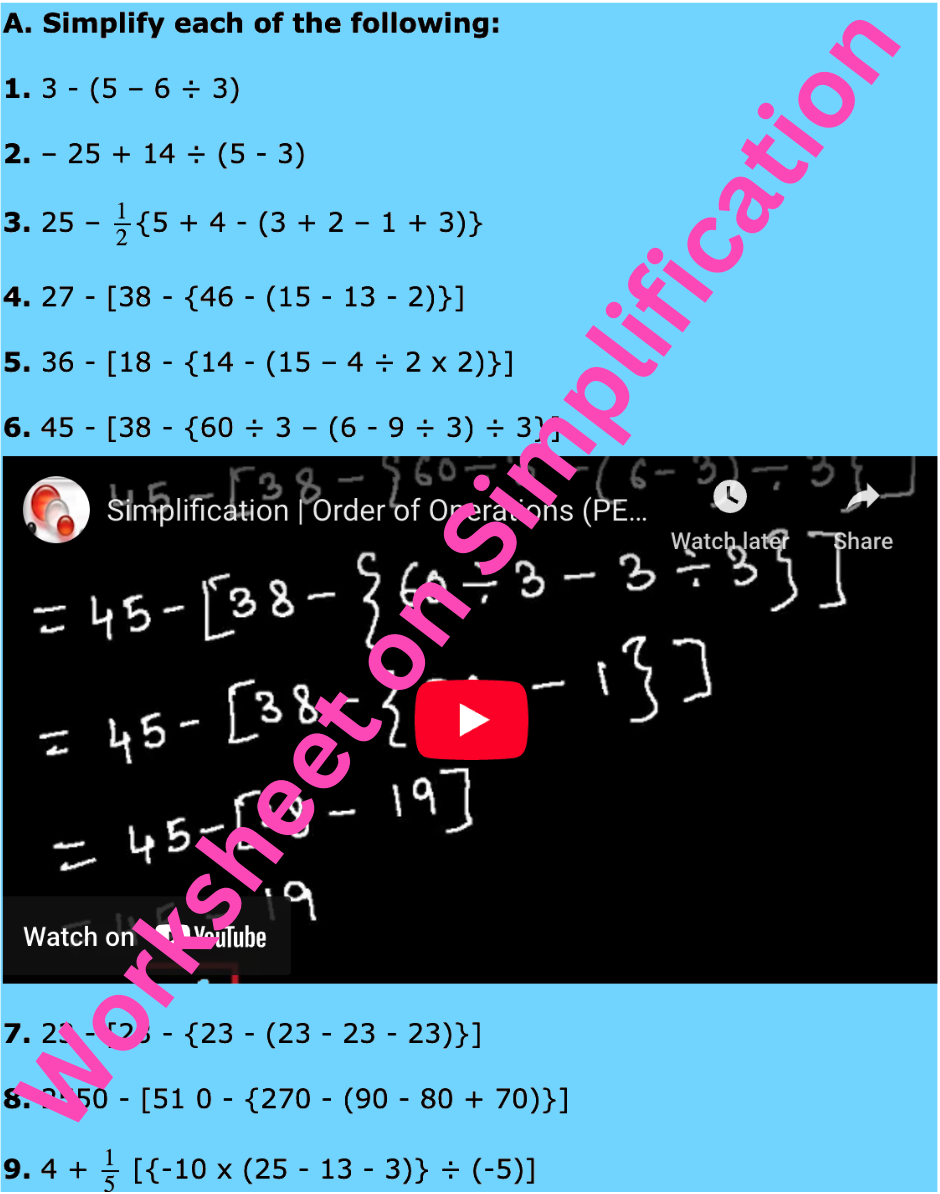Proportions
In math proportions we will mainly learn about introduction or basic concepts of proportion and also about continued proportion.
What is a proportion?
Equality of two ratios is called a proportion.
We already learnt that —
Statement of equality of ratios is called proportion.
Let us consider the two ratios.
6 : 10 and 48 : 80
The ratio 6 : 10 in the simplest form can be written as 3 : 5 and the ratio 48 : 80 in the simplest form can be written as 3 : 5.
i.e., 6 : 10 = 48 : 80
So, we say that four numbers 6, 10, 48, 80 are in proportion and the numbers are called the terms of the proportion. The symbol used to denote proportion is :: .
We write 6 : 10 :: 48 : 80. It can be read as 6 is to 10 as 48 is to 80.
In general we know, if four quantities a, b, c, d are in proportion, then a : b = c : d
or, a/b = c/d or a × d = b ×c
Here,
• First and fourth terms (a and d) are called extreme terms.
• Second and third terms (b and c) are called mean terms.
• Product of extreme terms = Product of mean terms
• If a : b : : c : d, then d is called the fourth proportional of a, b, c.
Also,
• If a : b :: b : c, then we say that a, b, c are in continued proportion, then c is the third proportional of a and b.
• Also, b is called the mean proportional between a and C.
• In general if a, b, c are in continued proportion then b² = ac or b = √ac.
Worked-out problems on proportions with the detailed explanation showing the step-by-step are discussed below to show how to solve proportions in different examples.
1. Determine if 8, 10, 12, 15 are in proportion.
Solution:
Product of extreme terms = 8 × 15 = 120
Product of mean terms = 10 × 12 = 120
Since, the product of means = product of extremes.
Therefore, 8, 10, 12, 15 are in proportion.
2. Check if 6, 12, 24 are in proportion.
Solution:
Product of first and third terms = 6 × 24 = 144
Square of the middle terms = (12)² = 12 × 12 = 144
Thus, 12² = 6 × 24
So, 6, 12, 24 are in proportion and 12 is called the mean proportional between 6 and 24.
3. Find the fourth Proportional to 12, 18, 20
Solution:
Let the fourth proportional to 12, 18, 20 be x.
Then, 12 : 18 :: 20 : x
⇒ 12 × x = 20 × 18 (Product of Extremes = Product of means)
⇒ x = (20 × 18)/12
⇒ x = 30
Hence, the fourth proportional to 12, 18, 20 is 30.
4. Find the third proportional to 15 and 30.
Solution:
Let the third proportional to 15 and 30 be x.
then 30 × 30 = 15 × x [b² = ac ]
⇒ x = (30 × 30)/15
⇒ x = 60
Therefore, the third proportional to 15 and 30 is 60.
5. The ratio of income to expenditure is 8 : 7. Find the savings if the expenditure is $21,000.
Solution:
Income/Expenditure = 8/7
Therefore, income = $ (8 × 21000)/7 = $24,000
Therefore, Savings = Income - Expenditure
= $(24000 - 21000) = 3000
6. Find the mean proportional between 4 and 9.
Solution:
Let the mean proportional between 4 and 9 be x.
Then, x × x = 4 × 9
⇒ x² = 36
⇒ x = √36
⇒ x = 6 × 6
⇒ x = 6
Therefore, the mean proportional between 4 and 9 is 6.
● Ratios and Proportions
● Ratios and Proportions - Worksheets
7th Grade Math Problems
From Proportions to HOME PAGE
Didn't find what you were looking for? Or want to know more information about Math Only Math. Use this Google Search to find what you need.
Recent Articles
-
Counting Numbers from 1 to 50 | Match the Number | Missing Numbers
Apr 04, 25 03:46 PM
In counting numbers from 1 to 50, recognize the numbers, count and then join the numbers in the correct number order. Here we mainly need eye-hand coordination to draw the picture and maintain the num -
Counting Eleven to Twenty with Numbers and Words |Numbers from 11 - 20
Apr 04, 25 03:21 PM
Counting eleven to twenty with numbers and words are explained below. One ten and one more is eleven. Eleven comes after ten. One ten and two more is twelve. Twelve comes after eleven. -
5th Grade BODMAS Rule Worksheet | PEMDAS | Order of operations|Answers
Apr 03, 25 03:11 PM
In 5th Grade BODMAS Rule Worksheet you will get different types of problems on mathematical expressions involving different operations, mathematical expression with 'brackets' and 'of' and simplifying… -
Worksheet on Simplification | Simplify Expressions | BODMAS Questions
Apr 03, 25 02:58 PM
In worksheet on simplification, the questions are based in order to simplify expressions involving more than one bracket by using the steps of removal of brackets. This exercise sheet -
Divisible by 2 Video |Test of Divisibility by 2 Trick| Rules| Examples
Apr 03, 25 10:25 AM
A number is divisible by 2 if the digit at unit place is either 0 or multiple of 2. So a number is divisible by 2 if digit at its units place is 0, 2, 4, 6 or 8.





New! Comments
Have your say about what you just read! Leave me a comment in the box below. Ask a Question or Answer a Question.